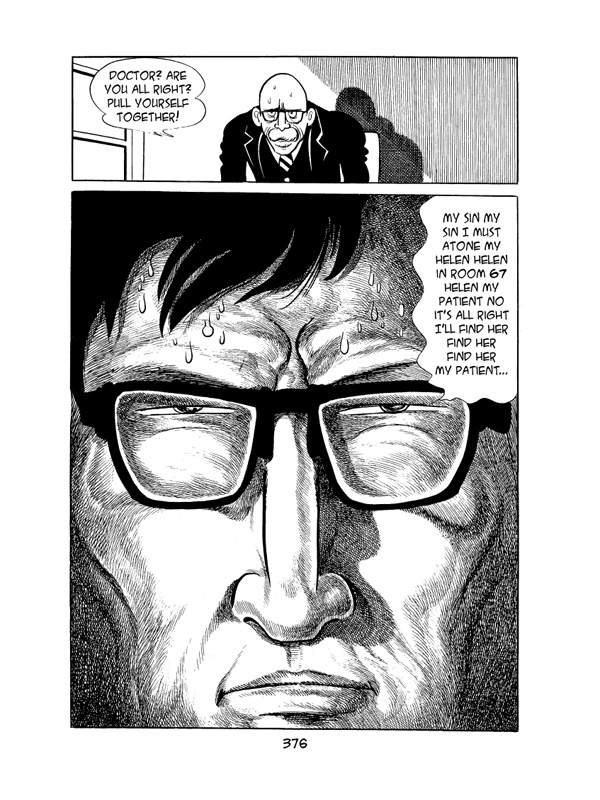With manga! I used to have a very low opinion of manga. I picked up one or two series over the years and found both the plot and the artwork goofy as hell. I know I'm not the target demographic, but that doesn't stop other young adult books or even children's books from being appealing. I just thought manga was something for which I had a special distaste, but now I've read enough manga that I found enjoyable that I feel the need to make a special post to apologize.
It all started when I was given the first of Osamu Tezuka's eight-volume epic series about the life of Buddha. The art still had a little of that goofy cartoonish feel that had turned me off in the past, but occasionally you would come across scenes like this one:
In other words, the simple manga characters would all of the sudden be walking around a beautifully detailed landscape. Call me shallow, but encountering these scenes every few pages helped remind me that Tezuka wasn't doing simple drawings because he couldn't do better. Here are three scenes from another great Tezuka work, Ode to Kirihito, which is one of the most original, strangest, and most compelling pieces of fiction (not just graphic fiction) that I've read in several years:
Ode to Kirihito really blew my mind and made me completely rethink my attitude toward manga. Since then, I've been finding more and more manga that rises above the goofy. I even found some non-fiction! What follows are some brief discussions of some of the really amazing stuff.
First, the Manga Guide series, about which I really can't say enough good things. Essentially, they are subject guides to some pretty tough topics, like statistics, cosmology, molecular biology, etc. There is a very skeletal plot (a student needs a crash course in a certain subject over the summer or something) but it's nothing more than a framework on which to build a lesson. Not only are they chock full of handy visual illustrations (duh), but they are extremely well-written (and well-translated) so that you never feel like you're reading a textbook. They break down complex topics in a fun, accessible way:
 |
| From The Manga Guide to Relativity |
Another super awesome manga series is Oishinbo. It can't truly be called non-fiction, because there are fictional characters and a simple plot, but in the same way as the Manga Guides both are basically devices used as excuses to discuss Japanese cuisine and food culture. For example, as part of his work as a newspaper reporter, the main character is tasked with creating an Ultimate Menu of Japanese food (it's a tough job, but someone has to do it) so he goes hither and thither learning about different cooking techniques. In reality though, the reader is getting simple lessons in things like how to cut fish properly, how chopsticks are made, dining etiquette, and other things to help you look smart at parties. There are specific volumes on vegetables, sushi, ramen, rice, and other topics, including sake:
 |
| This one reads right to left! |
So don't make the same mistake I did and write off manga as just for children, or too goofy to be seen reading on the train. Just like with most other things in life, there is way more going on here than you see at first glance. If nothing else, you're going to stumble across some truly amazing pen and ink work that evoke a completely different culture and way of thinking about the world. You could do worse.






No comments:
Post a Comment